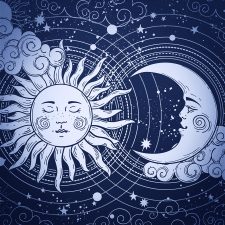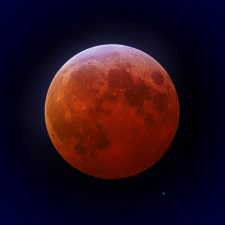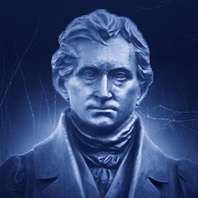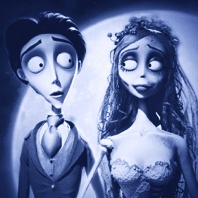The words “full moon” in many languages

It is said that there are more than 6,000 languages worldwide (this is hard to imagine) and it is a fascinating concept to think, there are probably as many words for “full moon”.
Here we begin our little journey to the full moon. A few words about the fascinating quest of the greater purpose, that includes the full moon circulating through our lives. In layman’s terms and not always scientific (astronomy experts – don’t look too closely!). We would like to wish you illuminating moments. Enjoy!


It is said that there are more than 6,000 languages worldwide (this is hard to imagine) and it is a fascinating concept to think, there are probably as many words for “full moon”.

A full moon is when the Sun and the Moon are facing opposite, being in opposite direction from an Earth perspective.
This might feel astonishing if one imagines that the Moon is on one side, the Sun on the other and the Earth in between? Shouldn’t the Earth throw a shadow onto the Moon? Bingo – this is exactly what she does! But only when the Moon is exactly on the Earth orbit, the so called “ecliptic”. When this takes place, we speak of a lunar eclipse!

The Moon needs 27.33 days to circle around the Earth. Something that is also referred to as “sidereal time”. But because the Earth orbits the Sun, just like the Moon orbits the Earth, the Moon has to travel two further days in order to resume the same position to the Earth and Sun. This is then called the “sidereal time”. In order to determine the point of time of the reoccurring full moon, the sidereal time serves as basis.

We already know now that the moon month is mostly shorter than the calendar month, being on average approximately 29.5 days. If full moon falls on the first or second of a month, it is possible that another full moon occurs in the same month, for instance in July 2004:
Friday, 2 July 2004, 01:08:54 pm
Saturday, 31 July 2004, 08:05:06 pm
This event is also known as “blue moon”.

The answer is: “everywhere at the same time”. This refers to the so called Universal Time (UT) though, which is used for general astronomical events. We have already learnt that full moon is an astronomical event, where the moon, sun and the earth play a role by being in a specific position. So, full moon takes place at a specific time in the outer space. This point of time is specified by astronomers namely by the Universal Time.

There are multiple ways of approaching this question. If we look at it from a purely theoretical standpoint, we might be tempted to say that the full moon is infinitely short, since the phases of the moon are changing continuously. The moon is not yet quite full shortly before the full moon, and is already waning shortly afterwards.
However, there is a practical aspect that lets us quantify the full moon as a finite and measurable span of time: Since the Sun is significantly bigger than the Moon, its rays are able to reach just a little over half of the Moon’s surface. This means that the timespan in which the visible side of the Moon’s surface is irradiated (as seen from Earth) is longer than infinitely short.

Whether scientists, astrologers or esoterics, they agree on one thing: the moon influences earth and life on earth. For instance, it regulates the tides through its magnetism. Also continents feel the consequence of this magnetism and either raise or lower their position sometimes up to 26 cm.

In nature it is a known fact: for some animal species, mating takes place at full moon. However, the examples that can be found on this subject are rather simple. Full moon serves in some cases indirectly as the cause (for instance through the high water levels during the tides that the horseshoe crab uses to deposit its eggs) or also as the signal for both sexes of a species to begin at the exact same time to safeguard their future existence (a particular type of fly or also corals). It is understood that also wolves are led by full moon when it is time to mate.

… that people are looking for an argument at full moon or are especially happy …
… that if full moon is surrounded by a haze, a person dies …
… that you raise your hat three times to the moon (being a man) or you make a curtsey (being a woman), in order to protect yourself from misfortune until the next full moon …
… that whoever does not chink glasses with full moon at least once, does not deserve any happiness [Greek toast] …

During a lunar eclipse, the Moon moves through the shadow of the Earth. Which means, that the Earth is positioned quite exactly between the Sun and Moon and casts its shadow onto the Moon. This is only possible at full moon and if some other requirements are met. Depending on whether the moon passes the partial or the core shadow of the Earth, we speak of a partial or total lunar eclipse.

There is a German poem called »Dunkel war’s, der Mond schien helle«, in which the first line has been dedicated to the Moon and which boasts special features. For one thing, nobody knows who wrote the poem, which is quite unusual coming from the »land of poets and thinkers«. For another thing, it is based on the principle of the »oxymoron«. This is a figure of speech that juxtaposes elements that are contradictory or that are created from terms which are mutually exclusive. Straight away, the first line reveals this principle, because it cannot be »dark«, when the Moon is shining »bright«.

Fitting into the Christmas period, we are hanging up a virtual mistletoe and calling upon all lovers out there to kiss each other! The custom has a long tradition in many countries. The symbolism of fertility and vitality play as much a part as the search for the possibility of making the kiss in public socially acceptable. The mistletoe helps to overcome the inhibition, which can stand especially between two people before their first kiss. And incidentally, for every kiss one berry of the bush is plucked – until no berries are left.

Just like with all natives from different countries and continents, the Moon also plays an important role amongst African peoples in myths and stories. In this respect, we have already mentioned other peoples, for example the Native American Indians in America, the Inuit in the far north or the Aborigines in Australia.

The German poet and novelist Joseph Freiherr von Eichendorff (1788–1857) counts among the foremost representatives of Romanticism. Many of his poems had been set to music and were sung.
Von Eichendorff, born in Ratibor (today Racibórz in Poland), studied originally law and worked in a variety of administrative civil service positions, up until he retired. Simultaneously, he devoted his time to his writing and publishing skills, until he died from pneumonia in 1857.

Fitting in with today’s full moon and the forthcoming events of Halloween, we dedicate this article to the stop motion movie »Corpse Bride« (2005) by Tim Burton, the master of bizarre and subtle productions. The movie is based on a Russian legend »Corpse Bride« and captures the story of a wedding between two people of varying social backgrounds (Victor & Victoria) or rather differing worlds (Victor & Emily), with the resulting tension.

Even though the idea would be wonderful: this is not about trees that grow on the Moon, but about trees on Earth that grew from seeds, which orbited the Moon exactly 34 times, in a small canister, during the Apollo 14 mission in 1971. For this joint project by NASA and USFS (US Forest Service), the astronaut Stuart Rosa took hundreds of tree seeds with him on this journey. Seeds of five different species of tree had been chosen: loblolly pine, sycamore, sweetgum, redwood and douglas fir. The seeds survived the weightlessness and also when the canister that contained the seeds, got destroyed in the vacuum of the decontamination chamber. The seeds had to be picked up individually after this incident.

Bathing during the full moon or in the full moon light, is a fascinating experience, which one or the other has surely made. Two ways to interpret this is either bathing in the water at the full moon (outdoors or in the bath tub), or bathing directly in the moonlight (when the light of the Moon shines onto your skin, just like sunbathing).

When the German author Michael Ende wrote »The Neverending Story« from 1977 to 1979, he created a milestone amongst the fantasy children and youth literature. The story about the shy boy Bastian Balthasar Bux on his adventure trip through the world of Fantastica, fascinated millions of readers of all age groups and has been translated into 40 languages up to date.

When the sunlight appears on the Moon’s surface in a flat angle, interesting lighting effects are created, due to the mountains and valleys, which can be observed quite well from the Earth. A well-known effect is the so called »golden handle«. This is when the Jura Mountains (»Montes Jura«) are illuminated 4 to 5 days before the full moon and appear as a bright arc, in front of the still darkened Sea of Showers (»Sinus Iridum«) of the Mare Imbrium. This is reinforced by the fact that the boundary of light and shadow, which is called »terminator«, runs directly through this area.
Who doesn’t know the bilious green, clumsy and yet endearing ogre with a heart of gold. »Shrek« is a series of computer animated motion pictures, which was the most costly computer animated production with their first part when it was released back in 2001, and awarded with an Oscar for best animation in 2002. The story is based on the children’s book »Shrek!« by the American cartoonist and children’s book author William Steig. The title derives of Yiddish and means »terror«. The movie was so successful that further sequels followed.